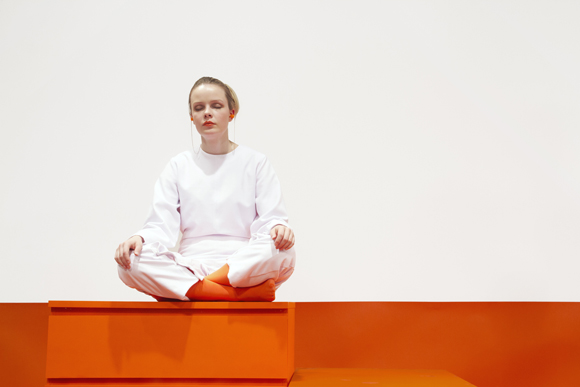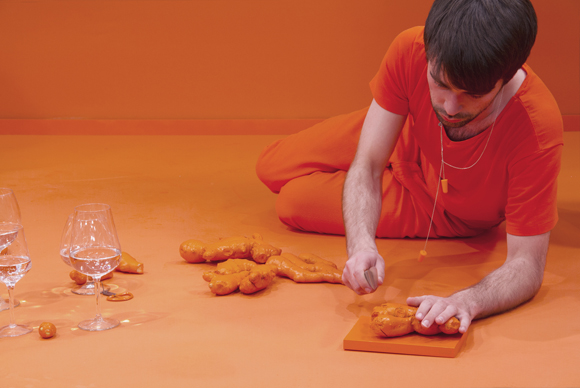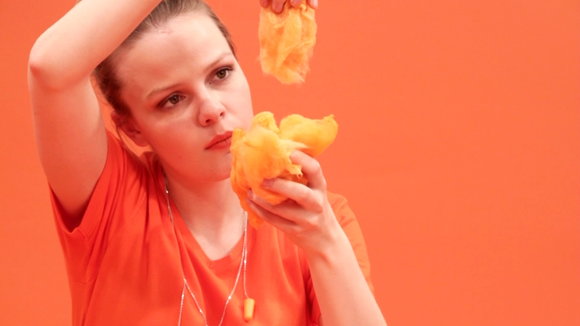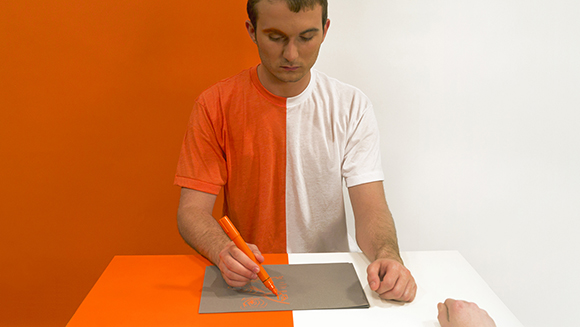
DIFFERENT MINDED WORLDS / EXTREME LIVING ROOM
Extreme Living Room is documenting another section of the Rethinkery that is about the exploration of extremes. Guests probe: How might you interact with others, if half of your body was restricted? How might living change if extremes, such as deprivation and sensual overload or other states were experienced side by side?
Current neuroscience shows that disfunction in various parts of the brain can lead to dramatic changes in behavior. For example, left side body neglect can come from disfunction of a part of the right side of our parietal lobe that is responsible for handling spatial relations. Additionally a quick and impulsive behavioural style or slow and cautious behaviour can come from issues in either the right or left hemisphere of the frontal lobe that coordinates movement.
The first exercise is based on these variations. The room is divided vertically in orange and white, the colours serving as guides for the guests. A person purposely neglects the left side of his body in white and concentrates on inhabiting a different character on his right side. He draws half a drawing in a very slow and cautious mode. Another person facing him neglects the opposite side and adopts a quick and impulsive character with his moving side. After a period of time, both swap their drawing and compensate for each other by finishing the work - resulting in new kinds of variations not available to the individual if undertaking the task alone.
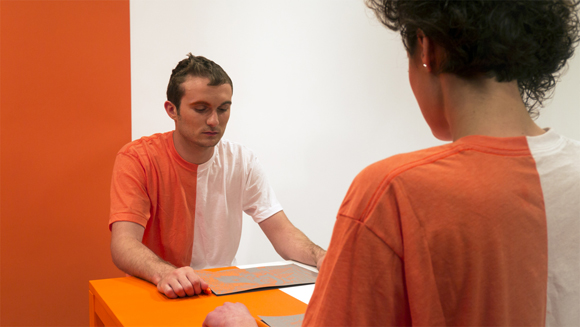
In a second exercise the room is divided orange and white horizontally. The white is a cue for sensorial deprivation and the orange for sensorial overload. Accordingly the persons while being in the upper space are without sensory input and withdrawn into themselves. Moving down into the orange space people change behaviour from slow and reflective to active and engaged. The orange space matches their engagement, flooding them with smell, sound, taste, and touch simultaneously.

